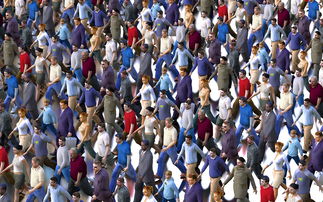In today's globalized society, transportation has become an essential part of our daily lives, connecting people, goods, and ideas across vast distances. As we traverse the world, understanding the terminology related to different modes of transportation in English is crucial for effective communication and appreciation of the engineering marvels that facilitate our journeys. This article delves into the fascinating realm of transportation vocabulary, exploring the diverse array of terms that define how we move from one place to another.
To begin with, let's start with the most basic form of transportation – walking. In English, this simple act is referred to as "pedestrianism" or simply "walking." A related term is "pedestrian walkway," which refers to designated paths for pedestrians. Moving on, we have the humble bicycle, known as a "bicycle" or "bike," often accompanied by the verb "to cycle" or "to pedal."
Public transport takes center stage when discussing larger scale mobility. The iconic bus is "a bus," while a train is a "railway train" or simply "train." Trams, found in cities, are called "streetcars" or "light rail." In urban areas, subway systems are known as "underground," "metro," or "subway trains." Taxis, hailed on the go, are called "taxicabs" or "cabs," and ride-sharing services like Uber and Lyft are referred to as "ridesharing platforms."

Air travel is another vital mode, with airplanes being "aircraft" or "jets," and airports denoted as "airports" or "jetways." Commercial flights are commonly known as "flights," while private planes are referred to as "private jets" or "chartered aircraft." Space exploration adds to the lexicon with "spacecraft" and "orbiting vehicles."
Sea transportation is represented by "ships," ranging from ferries ("ferry") to cruisers and liners. Ocean liners are often referred to as "passenger ships," while cargo vessels are labeled as "cargo ships" or "container ships." Cruise ships, meant for leisure, are called "cruise liners" or "cruises."
Non-motorized waterways bring forth words like "canoes," "kayaks," and "rowboats," while the grand scale of vessels like barges and cruise liners are named accordingly. For navigating rivers, we have "riverboats" and "steamboats," a nod to the era of steam power.
Then there's the world of automobiles, where cars are simply "cars," SUVs are "sport utility vehicles," and luxury cars are known as "luxury sedans" or "luxury coupes." Electric vehicles (EVs) have their own buzzword, "electric cars" or "e-cars." The concept of self-driving cars is represented by "autonomous vehicles" or "AVs."
Lastly, but not least, the future of transportation holds promise with the emergence of innovative concepts like "hoverboards," "personal air pods," and even "flying cars," or "vertical takeoff and landing (VTOL) vehicles."
Understanding these terms not only enhances our communication but also allows us to appreciate the rich history and evolution of transportation. From horse-drawn carriages to supersonic aircraft, each word tells a story of human ingenuity and progress. As we continue to push boundaries in transportation, the English language will undoubtedly adapt and introduce new words to capture these exciting developments.
In conclusion, the world of transportation is a linguistic treasure trove, encapsulating the essence of human endeavor and innovation. As we explore the English vocabulary surrounding these means of conveyance, we are reminded of our ability to connect, commute, and create a more interconnected world.
文章已关闭评论!
2025-01-11 18:01:08
2025-01-11 17:01:07
2025-01-11 16:01:04
2025-01-11 15:00:54
2025-01-11 14:00:52
2025-01-11 12:00:41
2025-01-11 11:00:42
2025-01-11 10:00:33